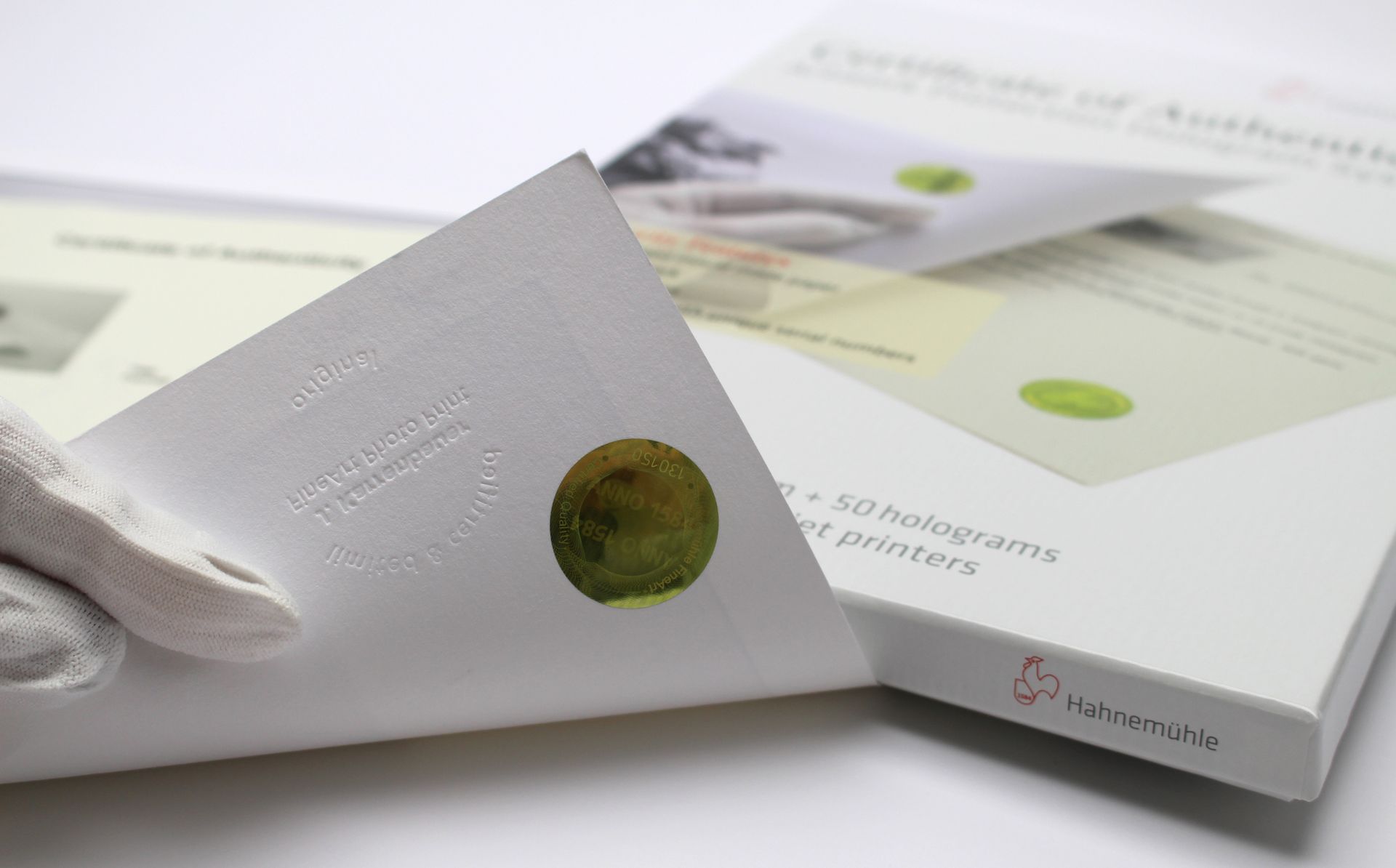- 222, Notre-Dame W., Old Montreal (QC) H2Y 1T3
- Telephone: 514.849.2291
- Toll-free: 1.877.674.6868
- info@photoservice.ca
-
Monday - Thursday: 8:30 am - 5:30 pm
Friday: 8:30 am - 6:00 pm
Saterday: 9:30 am - 4:30 pm
Sunday: Closed
Hahnemühle Certified
Created to help professional print suppliers achieve and maintain excellence in fine art reproduction, digital works and photographs.

Hahnemühle Certified & Vegan
PHOTO SERVICE, A CERTIFIED STUDIO ENDORSED BY HAHNEMÜHLE
The “Hahnemühle Certified Studio” program was created to help professional print suppliers achieve and maintain excellence in fine art reproduction, digital works and photographs. A certified studio has been accredited by one of our technicians after a training session and completed assessment. Among many criteria, the studio must have an advanced level of training regarding the archivability and longevity of its prints, and possess all the skills required for the workflow of inkjet printing jobs. They must fully implement the color management workflow.
Educational orientation is carried out during an on-site visit by a Hahnemühle technician. The goal is to increase print workflow efficiency, accurate color management and correct print processing practices that will achieve consistent output quality.
Certification criteria
- Higher education in archivability and longevity Competence in the FineArt Inkjet print workflow Complete implementation of the color management workflow Standardized light color matching conditions Soft proofing capabilities Knowledge of image processing non-destructiveProper use of premium inkjet printersUse of Hahnemühle FineArt media
Customer benefits of a certified studio.
- Consistent quality at all stages of production Ensured archiving of all prints Consistent print quality and reproduction Trained employees
Hahnemühle Bamboo «Paper Vegan»
Hahnemühle Bamboo is the first quality paper in the Hahnemühle Traditional FineArt collection *made from bamboo fibers. Hahnemühle Bamboo paper also has a certificate of conformity stating that it is vegan.
This means that Hahnemühle Bamboo does not contain raw materials of animal origin or “genetically modified” sources. This media is therefore ideal for artists concerned about the impact of their lives on the lives of animals.
Hahnemühle Bamboo (Matte Fine Art Smooth)
- 90% bamboo fibers and 10% recycled cotton. “Coton Rag” is naturally acid-free, light-resistant and extremely durable. The cotton is recycled at the factory from the ends of rolls and paper edge cuts. There are no outside papers in the factory so no contamination possible! Profits from sales of this paper are donated to environmental projects around the world by HahnemühleIn summary, the Hahnemühle factory has been certified vegan by officials of German government. This paper is glued with starch, without animal proteins or gelatins.

Slide title
Write your caption hereButton
Slide title
Write your caption hereButton
Slide title
Write your caption hereButton
Slide title
Write your caption hereButton

Leigh Sanders, creator of 'The Arty Vegan' Facebook group, talks about veganism and traditional art. The Arty Vegan Facebook group →
The Arty Vegan Facebook group
Veganism is defined by Wikipedia as “the practice of abstaining from the use of animal products, especially in food, as well as following a philosophy that rejects the status of animals as commodities.” They add: "Vegan ethical terminology often applies to those who not only follow a vegan diet, but who apply vegan philosophy to other areas of their lives and object to the use of animals or products of animal origin. Vegans care deeply about the environment and the lives of other “sentient” beings. Transitioning to veganism starts with watching what you eat, giving up all foods that contain meat, eggs, dairy, honey, etc.
For vegans, not everything that was alive is a food item. A person with a vegan mindset and ethic will also begin to question its impact on daily life. For example, they will pay attention to the clothes they wear (leather, fur, silk, etc.), the cleaning products and toiletries they use (most are tested on animals), cosmetics (many contain products derived from animals), etc.
Vegan artists therefore want to use artistic products in accordance with their vegan principles.
For example:
- Watercolor papers that are not graded with gelatin; India ink not containing shellac binder; Sepia ink not made from squid and squid ink; Black pigments (ink or other) that are not manufactured from charred animal bones, as in charcoal; Red paint pigments that are not made from crushed cochineal beetles; Watercolor paints that do not contain ox gall; Pencils that do not contain beeswax; Canvases that have not been glued with rabbit skin glue; Natural gesso that does not contain gelatin; Brushes that are not made from beeswax hair animals like sable, squirrel, mongoose, horsehair and crocodile, to name a few.
For someone who cares deeply about how their life affects the lives of animals, this information is disconcerting and deeply disturbing. Art in accordance with vegan principles is an extension of who vegans are and therefore should reflect their ethics.
Vegans say, “How can we in good conscience paint a masterpiece knowing that the material we use has indirectly caused the death of animals and insects?” We can not. We need vegan art materials, quality art materials at an affordable price so we can create and express ourselves freely. »
You can read more about Leigh Sanders in her following blog: makeconsciouschoices.blogspot.com
*Fine Art printing is also called Giclée printing. The word comes from the French verb "Gicler", which means "to spray" - exactly what is done in an inkjet printer. The term was coined to differentiate high-quality work from expensive Iris inkjet machines, which at the time cost more than $150,000.
Questions? We would like to hear from you!
- 222, Notre-Dame W., Old Montreal (QC) H2Y 1T3
- Telephone: 514.849.2291
- Toll-free: 1.877.674.6868
- info@photoservice.ca
-
Monday - Friday : 8:30 am to 5:30 pm
Saterday: 9:00 am to 1:00 pm **
**ATTENTION NEW SCHEDULE
Sunday: Closed
Follow us
Newsletter
Everything you need to know about the world of photography and special promotions.


